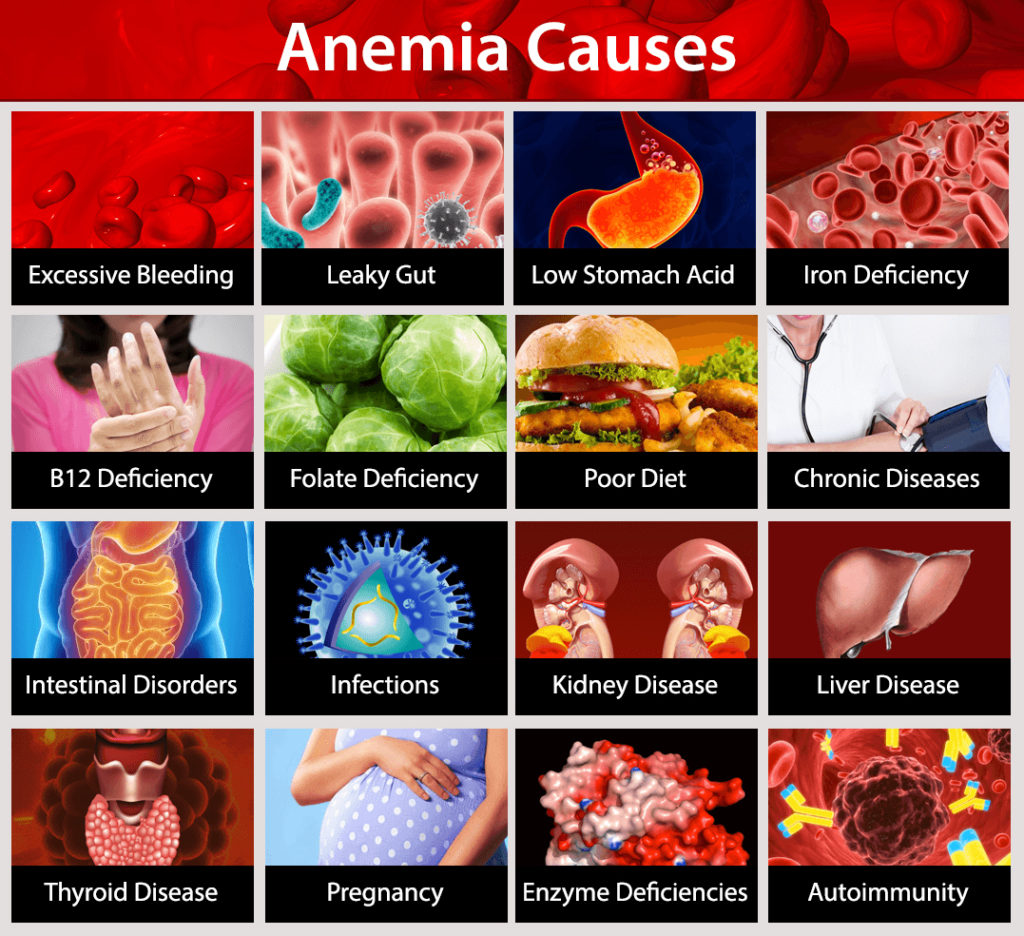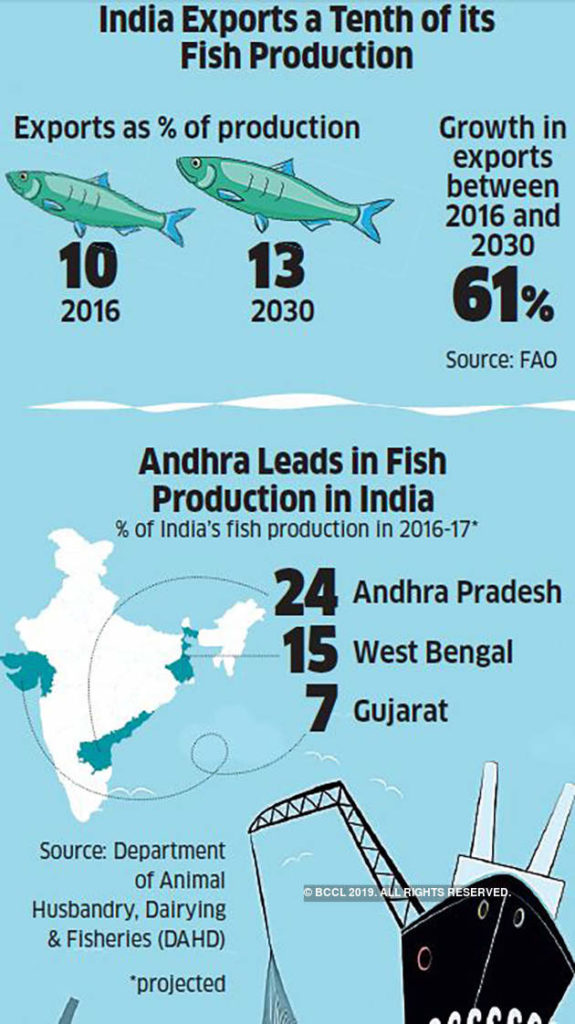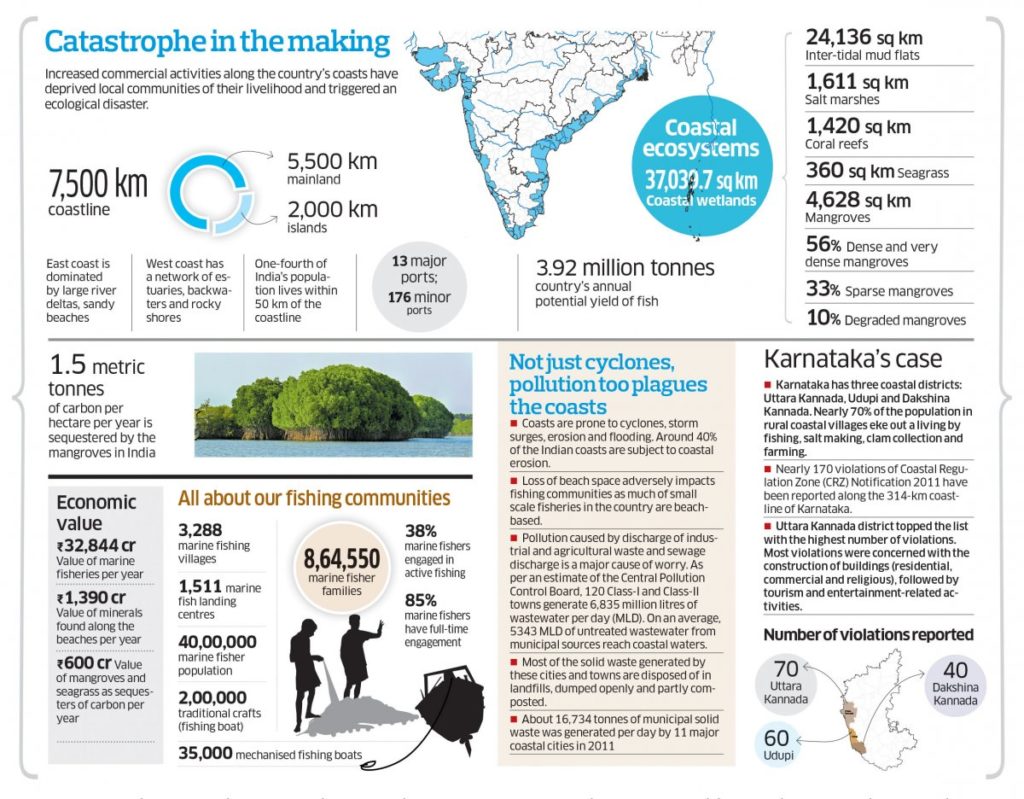Contents
- Programmes to Control Anaemia Among Women
- Kisan Seva Kendras
- Logistics Costs in Agriculture
- Promoting Farmers’ Producer Organisations
- Sea Food Exports
- E- Commerce Companies not adhering to the rules
- National Center for Coastal Zone Management
- PM YUVA
- Skill Development for Minorities in NE region
- Innovative Farmer Models and Technologies
- Subsidies for Fertilizers
- Coal Mines
- International Geological Congress
- Pneumonia
- National Afforestation Programme
Programmes to Control Anaemia Among Women
Why in news?
Government of India has launched the Anemia Mukt Bharat (AMB) strategy under the Prime Minister’s Overarching Scheme for Holistic Nourishment (POSHAN) Abhiyaan and the targets has been set to reduce anaemia by 3% per year.

Government strategy:
The 6x6x6 strategy under AMB implies six age groups, six interventions and six institutional mechanisms.
The strategy focuses on-
- ensuring supply chain
- demand generation and strong monitoring using the dashboard for addressing anemia, both due to nutritional and non-nutritional causes.
- The six population groups underAMB strategy are:
- Children (6-59 months)
- Children (5-9 years)
- Adolescents girls and boys (10-19 years)
- Pregnant women
- Lactating women
- Women of Reproductive Age (WRA) group (15-49 years)
- The six interventions are:
- Prophylactic Iron and Folic Acid Supplementation
- Deworming
- Intensified year-round Behaviour Change Communication (BCC) Campaign and delayed cord clamping
- Testing of anaemia using digital methods and point of care treatment,
- Mandatory provision of Iron and Folic Acid fortified foods in Government funded health programmes
- Addressing non-nutritional causes of anaemia in endemic pockets with special focus on malaria, hemoglobinopathies and fluorosis and the six institutional mechanisms.
- The six institutional mechanisms are:
- Inter-ministerial coordination
- National AnemiaMukt Bharat Unit
- National Centre of Excellence and Advanced research on Anemia Control
- Convergence with other ministries
- Strengthening supply chain and logistics
- AnemiaMukt Bharat Dashboard and Digital Portal- one-stop shop for Anemia.
Extra Coverage:
Value: For Prelims only

KISAN SEVA KENDRAS
What is it?
Kisan Seva Kendras (KSKs) are rural retail outlets of Indian Oil Corporation Limited (IOCL) where all customers who come for refuelling are serviced.
Ministry: By Ministry of Petroleum and Natural Gas
Also provide allied facilities like Micro ATM, Convenience Store, Fertilizers/Pesticides, farm equipments etc. depending upon the buying habits and preference of the local rural customers.
Value: For Prelims only
LOGISTICS COST IN AGRICULTURE
Why in news?
Government has announced for development and upgradation of existing rural haats into Gramin Agricultural Markets (GrAMs). This will provide farmers facility to make direct sale to consumers and bulk purchasers which will reduce the logistic cost.
Government has implemented the policy for reimbursement of freight subsidy for distribution of subsidized fertilizers through coastal shipping or/and inland waterways.
In order to develop the infrastructure in farming sector including that of distribution logistics, the Government is implementing Rashtriya Krishi Vikas Yojana-Remunerative Approaches for Agriculture and Allied Sector Rejuvenation (RKVY-RAFTAAR) Scheme.
Extra Coverage:
Rashtriya Krishi Vikas Yojana:-

Advantages of the scheme:
- The scheme will incentivise states in enhancing more allocation to agriculture and allied sectors.
- It will help in the creation of post harvest infrastructure. It will also strengthen farmers’ efforts through creation of agriculture infrastructure that will help in supply of quality inputs, market facilities among other related requirements for the growth of agriculture and allied activities.
- It will help in promotion of private investment in the farm sector across the nation
- It will further promote agri-entrepreneurship and support business models which will in turn maximize returns to farmers.
- It lays emphasis on involving the youth in agriculture and allied activities in order to increase rural employment by providing various incentives.
- It is also aligned with the target of doubling farmer’s income by 2022.
- Sub-schemes like Accelerated Fodder Development Programme (AFDP), Saffron Mission, Crop Diversification Programme (CDP) etc will be implemented under RKCY-Raftaar.
PROMOTION OF FPOs
Why in news?
Government of India through Small Farmers’ Agribusiness Consortium (SFAC), a registered society under Department of Agriculture, Cooperation & Farmers Welfare, Government of India, is promoting FPOs by mobilizing the farmers and help them in register as companies and providing them with handholding support and training for their sustainability.
What is it?
- Farmers’ Producer Organisation (FPO), also known as farmers’ producer company (FPC), is an entity formed by primary producers.
- These include farmers, milk producers, fishermen, weavers, rural artisans, and craftsmen.
- An FPO can be a Producer Company, a Cooperative Society or any other legal form.
- FPOs are basically the hybrids of cooperatives and private companies.
- The participation, organisation and membership pattern of these companies are more or less similar to the cooperatives.
- But their day-to-day functioning and business models resemble those of the professionally-run private companies.
- The Companies Act was amended by incorporating Section-IX A in it to allow creation and registration of FPOs under it.
Challenges faced by FPOs:
- FPOs lack business development and marketing skills, which are critical for the success of FPOs as a business entity.
- Missing of management capabilities in the supply chain operations, nuances of market dynamics and linkages, business planning according to market intelligence and market development
- The present system suffers from distortions like multiple intermediaries and levies, lack of vertical integration (is the combination in one firm of two or more stages of production normally operated by separate firms), poor infrastructure, restrictions on the movement of agricultural commodities, and so on.
- Thus, the limited market choices and lack of transparency have been the major barriers in better price realization for the farmers.
SEA FOOD EXPORTS
Why in news?
Chinese Customs authorities through Embassy of India in Beijing have informed the detection of White Spot Syndrome Virus (WSSV) and Infectious Hypodermal and Hematopoietic Necrosis Virus(IHHNV) in 10 consignments of Vannamei shrimp exported from India and suggested to investigate the cause of detection and take effective control measures in this regard.
What is White spot syndrome virus?

It is responsible for causing white spot syndrome in a wide range of crustacean hosts. White spot syndrome (WSS) is a viral infection of penaeid shrimp. The disease is highly lethal and contagious, killing shrimp quickly. Outbreaks of this disease have wiped out the entire populations of many shrimp farms within a few days, in places throughout the world.
Extra Coverage:
The prawn production in India accounts for about 15% of the total world production of prawn and shrimps. For marine prawns, the percentage of Indian production to the world production is about 20%.

E-COMMERCE COMPANIES NOT ADHERING TO THE RULES.
DPIIT released guidelines for FDI on e commerce companies.
- The revised FDI policy issued by the centre explains certain principles laid down in circular on the operations of online market places, wherein 100% foreign direct investment, or full foreign ownership is allowed.
- The new norms bar exclusive tie-ups between e-commerce firms that follow the ‘market place model’ and vendors using their platform.
- In a market place model, the e-commerce firm is not allowed to directly or indirectly influence the sale price of goods or services, and is required to offer a level playing field to all vendors.
- Now the cash back or services, such as quick delivery, offered by e-tailers have to be applicable to all vendors on their platforms.
- It also envisages that if a vendor sells more than 25% of its wares through an e-commerce marketplace, the latter will be deemed to have an inventory model, in which FDI is not allowed
NATIONAL CENTER FOR COASTAL ZONE MANAGEMENT
Why in news?
The Ministry of environment, forest and climate change has set up the National Centre for Sustainable Coastal Management (NCSCM), Chennai to undertake studies and research in the area of Coastal Zone Management including coastal resources and environment
The aims and Objectives of the Center are:
(i) Strive for being a World Class Knowledge Institution related to coastal zones, environment, resources and processes,
(ii) To promote integrated and sustainable management of the coastal and marine areas in India for the benefit and wellbeing of the traditional coastal and island communities, and
(iii) Advice the Union and State Governments and other associated stakeholder(s) on policy, and scientific matters related to Integrated Coastal Zone Management (ICZM)
Why do we need to regulate our coastal?

Extra coverage:-
What are types of CRZ?

PM YUVA
Why in news?
Ministry of Skill Development and Entrepreneurship (MSDE) started its flagship scheme, ‘Pradhan Mantri Yuva Udyamita Vikas Abhiyan enabling entrepreneurship Eco-System by catalyzing and co-ordinating entrepreneurship efforts across the country to ensure sizeable and measurable outcomes.
Objectives of this scheme are:
- Educate and equip potential and early stage entrepreneurs
- Develop and deliver entrepreneurship education to all citizens
- Focus on the promotion of social entrepreneurship.
Extra Coverage:
Pradhan Mantri YUVA Yojana (Yuva Udyamita Vikas Abhiyan) is a is a centrally sponsored Scheme on entrepreneurship education and training being implemented by the Ministry of Skill Development and Entrepreneurship

SKILL DEVELOPMENT OF MINORITIES IN NORTH EAST REGION
Why in news?
Under Skill India Mission, the Ministry of Minority Affairs is implementing various schemes for skill development of youth belonging to minority communities on pan India basis namely
1. “Seekho aur Kamao”– a placement linked Skill Development scheme for minorities
2. Upgrading the Skills and Training in Traditional Arts/ Crafts for Development (USTTAD) for preservation of traditional crafts/arts and
3. “Nai Manzil” to integrate education with skills for economic empowerment of minority communities.
Extra Coverage:
Schemes run by Ministry of Minorities
Government has taken following initiatives for the welfare and upliftment of the minority communities:-
- USTAAD:– The Scheme aims at upgrading Skills and Training in preservation of traditional Ancestral Arts/Crafts of minorities.
- Hamari Darohar:- The Scheme aims to preserve rich heritage of minority communities in context of Indian culture.
- Khwaza Garib Nawaz Senior Secondary School will be established at Ajmer by Maulana Azad Education Foundation (MAEF) to give a fillip to minority education.
- Nai Manzil: A bridge course to bridge the academic and skill development gaps of the deeni Madrasa passouts with their mainstream counterparts.
- Strengthening of State Wakf Boards: The scheme envisages to provide assistance for meeting the training and administrative cost of State Wakf Boards, removal of encroachment from Waqf Properties and also strengthening of Zonal/Regional offices of Waqf Boards.
SKILL INDIA MISSION
Why in news?
Target is to have 300 million skilled people by 2022.
To achieve the objective of Skill India Mission, Ministry of Skill Development and Entrepreneurship (MSDE) are running various schemes/programs to impart skilling to the youth through long term and short term training.

INNOVATIVE FARMER MODELS AND TECHNOLOGIES
Why in News?
Indian Council of Agricultural Research (ICAR) signed a Memorandum of Understanding (MoU) with the National Board of Agriculture and Rural Development (NABARD)
This MoU Facilitates:
- Research carried out with Active Participation of Farmers (Action research)
- Upscaling of various technologies and Innovative Farmer Models developed by ICAR
- Technologies and Models in question includes: Successful Climate Resilient Practices, Models, Integrated and Hi-Tech Farming Practices
- This is done in a Participatory Model through Adoptive Research on Watershed Platform.
- Site-specific transfer of technologies under Sustainable Agriculture, Integrated Farming System, Crop Intensification, Agro-Forestry, Plantation and Horticulture, Animal Sciences, Agri-Engineering, etc., including Post-Harvest technologies.
Details
- Emphasis was made on financial support to young Agri-Entrepreneurs.
- The ICAR will also help in the impact evaluation of the NABARD assisted projects, DPR (Detailed Project Report) preparation for the Climate Change Projects, Farm Mechanization, Agri-Incubation Centres / FPOs (Farmer Producer Organisations) and resource conservation, etc.
Participants in the MoU
ICAR
- An autonomous organisation under the Department of Agricultural Research and Education (DARE), Ministry of Agriculture and Farmers Welfare.
- Headquartered at New Delhi.
- The apex body for co-ordinating, guiding and managing research and education in agriculture including horticulture, fisheries and animal sciences in the entire country.
NABARD
- A development bank focusing primarily on the rural sector of the country.
- Is a statutory body established in 1982 under Parliamentary act; National Bank for Agriculture and Rural Development Act, 1981.
- Apex banking institution to provide finance for Agriculture and rural development.
- Headquartered at Mumbai.
SUBSIDIES FOR FERTILIZERS
Ministry of Chemicals and Fertilizers:
Details – Urea fertilizers
- Government of India provides subsidies to Urea Manufacturers and Importers, so that farmers can avail them at a lower price.
- Amount given as subsidy = The delivered cost of fertilizers at farm gate – Net market realization by the Urea units.
- Taxes and Neem-coating charges are applied additionally.
Details – Phosphatic and Potassic (P&K) fertilizers
Government of India implemented Nutrient Based Subsidy Policy for P&K fertilizers. Based on nutrient content, each grade of P&K fertilizer is provided subsidy, decided annually.
COAL MINES
Why in News?
Ministry of Coal had initiated the auction process for 27 coal mines.
End uses: Power, Sale of Coal and Iron and Steel.
Names of Mines: Bikram, Brahmapuri, Bhaskarpara, Jagannathpur and Jamkhani.
Extra Coverage:

- These Mines will add more than 5MT coal per annum,
- Boost coal production in country,
- Reduce dependence of industries on Imports,
- Generate 15,000 crores INR revenue for the State Governments in which these mines are located.
INTERNATIONAL GEOLOGICAL CONGRESS
Why in news?

- India is hosting the 36th International Geological Congress (IGC) at New Delhi on March 2020.
- IGC is also described as the Olympics of Geosciences, and is held once in every FOUR YEARS.
- Deals with problems of sustainability, energy crisis, water crisis, climate change, environmental issues and resource management.
- India is the ONLY ASIAN COUNTRY to Host the event twice. (First – 1964)
- Funded by: Ministry of Mines (MoM) and Ministry of Earth Sciences (MoES).
- Supported by Indian National Science Academy (INSA) and academies of Bangladesh, Pakistan, Nepal and Sri Lanka.
PNEUMONIA
Why in News?
Under National Health Mission launched in 2005 by Ministry of Health and Family Welfare, the following interventions are implemented to address pneumonia:
- SAANS (Social Awareness and Actions to Neutralize Pneumonia Successfully). This initiative provides guidelines, skill training for identification and management of Pneumonia and a campaign to ensure awareness.
- UIP (Universal Immunization Programme)
- IYCF (Infant and Young Child Feeding)
- PCV (Pneumococcal conjugate vaccine) has been introduced since 2017
NATIONAL AFFORESTATION PROGRAMME
Why in News?
- Ministry of Environment, Forest and Climate Change (MoEFCC) is implementing plantation/afforestation schemes in the forest areas with participatory approach.
- Species for plantation under NAP are selected by Joint Forest Management Committees (JFMC).
- Other schemes by MoEFCC for development of forest: National Mission for a Green India (GIM) and Forest Fire Prevention and Management Scheme (FFPM).
- Funds collected by (CAMPA) Compensatory Afforestation Fund Management and Planning Authority are also used.
CAMPA:
- Supreme Court of India ordered for establishment of CAF (Compensatory Afforestation Fund) and CAMPA in 2001.
- In 2006, CAMPA was established.
- Each of the states have a State CAF as well.
- CAF is under the Public Account of India.
- A company Diverting Forest Land MUST Provide Alternative Land to take up compensatory afforestation, and also Pay the state to plant new trees.




